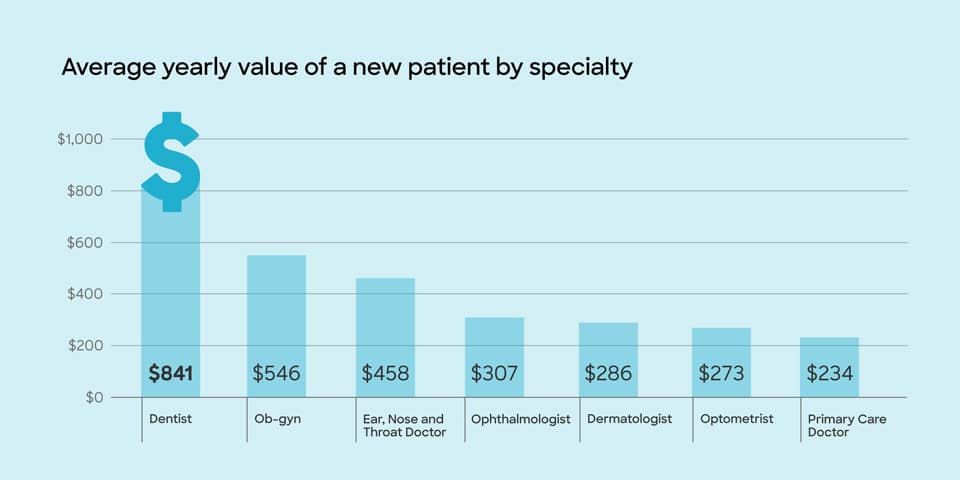As a healthcare business, while you might be looking for ways to cut business costs amid this tumultuous landscape, you want to be careful about cutting your investments in patient acquisition.
To stay profitable across the board, you need to continue bringing in new patients. You may have heard that the solution to building a more numbers-focused acquisition strategy is calculating your patient lifetime value (LTV), or the revenue a patient brings in over the years they visit.
But the more practical metric to build your marketing strategy around is the average revenue a new patient brings in their first year.
(You can read more insights on why this is important in our “What Should You Spend to Acquire a New Patient?” whitepaper.)
If you have the correct data, you can calculate this number for your own business, but to help shortcut the process, Zocdoc did an industry-wide survey to arrive at valuable benchmarks.
We conducted surveys of 351 medical groups and 11 health systems to determine the average first-year value of a new patient, based on records from those businesses. What we discovered is that the average value of a new patient in the first year differs widely by the size of the healthcare practice.
For health systems, the average value is $1,395 per new patient, while it’s $538 for smaller medical groups.

Specialty, of course, also significantly changes the annual value of a new patient.
Zocdoc further broke down the average yearly value of a new patient across different specialties among large medical groups and smaller practices:

Having an accurate sense of what it costs to acquire a new patient within your specialty can embolden you to invest in patient acquisition. A clear picture of your patients’ average first-year value can help you determine which acquisition avenues are profitable and which aren’t.
When deciding on a new patient acquisition approach, be it Zocdoc or another tool, use this data as a north star to make the most beneficial decisions for your business.
